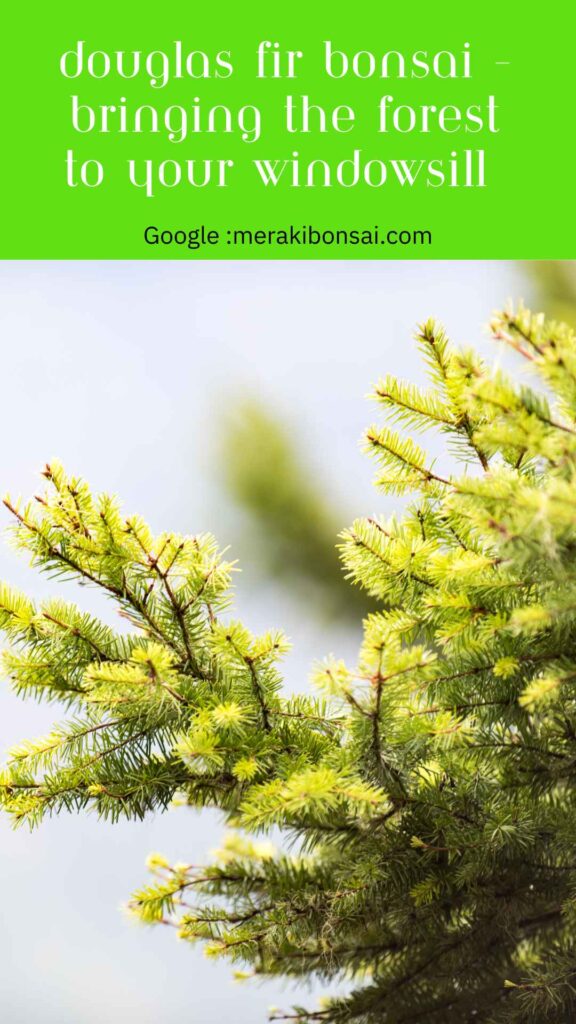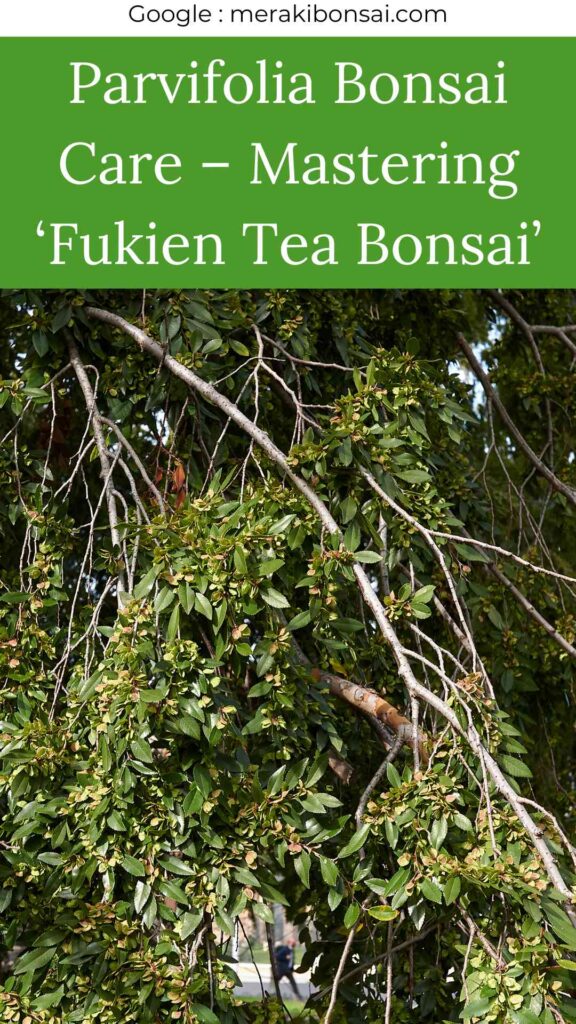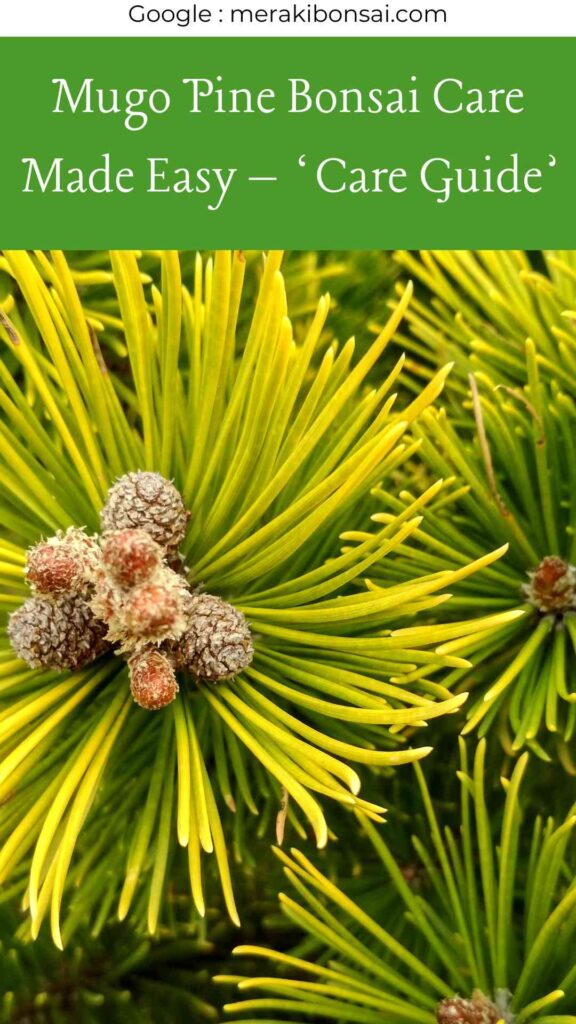
Hey there, bonsai buddies! It’s Raima here, your friendly neighborhood bonsai enthusiast. Today, we’re diving into the enchanting world of Douglas Fir bonsai trees. Can you believe it? We’re about to bring a piece of the majestic Pacific Northwest forest right into your home!
Now, I know what you’re thinking – “Raima, isn’t that the tree they use for Christmas?” You’re absolutely right! But trust me, these evergreen beauties are so much more than just holiday decorations. With their soft, feathery needles and delicate cones, Douglas Firs make stunning bonsai specimens that can bring a touch of nature’s magic to your windowsill all year round.
I’ve been nurturing bonsai trees for over a decade now, and let me tell you, working with Douglas Firs has been a joy. They’re resilient, adaptable, and oh-so-charming. Whether you’re a bonsai newbie or a seasoned green thumb, I’m here to guide you through every step of caring for your own little forest in a pot.
First things first, let’s talk about the star of our show: the Douglas Fir. Known scientifically as Pseudotsuga menziesii (don’t worry, I won’t quiz you on that!), these trees are native to the western United States and Canada. In the wild, they can soar up to 300 feet tall – that’s like a 30-story building! But in the bonsai world, we’re aiming for more of a miniature skyscraper.
Now, before we dive into the nitty-gritty of bonsai care, let’s make sure you have all the right tools. It’s like baking a cake – you need the right ingredients and equipment to make it perfect. So, let’s go shopping!
First up, you’ll need a cozy home for your Douglas Fir. I love this bonsai pot for its classic look and perfect drainage holes. If you want something a bit fancier, check out this ceramic bonsai planter. It’s not only functional but also adds a touch of elegance to your space.
Next, let’s talk light. Douglas Firs love the sun, but they’re not fans of scorching heat. If you’re growing your bonsai indoors (which is totally doable!), you’ll want to invest in some bonsai indoor lights. These will give your little tree the brightness it craves without the risk of sunburn.
Watering is crucial for any plant, but especially for bonsai. You want to keep the soil moist but not soggy – it’s a delicate balance. I use this adorable watering can that makes the task a breeze. And to make sure you’re not over or under-watering, grab a soil moisture meter. It’s like a crystal ball for your bonsai’s hydration needs!
Now, let’s talk food. Just like us, bonsai trees need their nutrients. I swear by this fertilizer. It’s like a multivitamin for your Douglas Fir, providing all the good stuff it needs to stay healthy and grow beautifully.
As your bonsai grows, you’ll need to do a bit of trimming to maintain its shape. Don’t worry, it’s not as scary as it sounds! A good set of bonsai pruning tools will make you feel like a bonsai surgeon. For those delicate needles and tiny branches, I recommend these bonsai pruning scissors. They’re perfect for precision work.
Even in the bonsai world, pests can be a problem. But we don’t want to harm our little tree with harsh chemicals. That’s why I use this organic insecticide. It keeps the bugs at bay without any nasty side effects.
Lastly, let’s talk about shaping. This is where the art in bonsai comes in. You’ll need some wire to gently guide your tree’s branches into the shape you desire. I use both anodized aluminum wire and annealed copper wire. The aluminum is great for younger, more flexible branches, while the copper is perfect for thicker, more stubborn ones.
Phew! That was quite a shopping list, wasn’t it? But trust me, having the right tools makes all the difference. Now that we’ve got our gear, let’s dive into the care and growing of your Douglas Fir bonsai.
First up, soil. Douglas Firs prefer a well-draining mix. You want something that holds moisture but doesn’t stay waterlogged. A mix of akadama (a type of clay used in bonsai), pumice, and organic compost works wonders. It’s like giving your tree the perfect balance of a cozy bed and a refreshing drink.
When it comes to watering, think of your Douglas Fir as Goldilocks – not too much, not too little, but just right. Water when the top inch of soil feels dry to the touch. That’s where your soil moisture meter comes in handy. In spring and summer, you might find yourself watering daily. In fall and winter, it’ll be less frequent. Remember, it’s better to underwater slightly than to overwater. Bonsai trees have shallow pots, so they can’t handle standing water.
Now, let’s talk about light. Douglas Firs are sun-lovers, but they also appreciate some shade during the hottest part of the day. If you’re growing indoors, place your bonsai near a south-facing window. If that’s not possible, your bonsai indoor lights will be a lifesaver. Aim for about 12-14 hours of light per day. It’s like giving your tree a nice, long summer day, even in the middle of winter!
Feeding your bonsai is like giving it a balanced diet. Use your fertilizer every two weeks during the growing season (spring through fall). In winter, when your tree is resting, you can cut back to once a month. It’s like how we eat lighter in winter, right?
Now for the fun part – shaping and pruning! This is where your Douglas Fir truly becomes a work of art. Start by removing any dead, diseased, or crossing branches. Then, use your pruning scissors to trim back new growth, encouraging your tree to grow more compact and full.
For shaping, you’ll use your wires. Start with the thickest branches and work your way to the thinner ones. Gently wrap the wire around the branch, then carefully bend it into the desired position. Be patient – this process can take months. It’s like yoga for your tree; you’re helping it stretch into a beautiful new pose.
Speaking of poses, there are several classic bonsai styles you can try with your Douglas Fir. There’s the upright formal style, where the trunk is straight and branches are symmetrical – very regal! Or you could go for the slanting style, with the trunk leaning to one side, as if caught in a gentle breeze. My personal favorite is the cascading style, where branches spill over the edge of the pot like a miniature waterfall. It’s like having a piece of a mountain cliff right on your shelf!
Now, let’s talk about a few challenges you might face. Douglas Firs are generally hardy, but they can be susceptible to pests like spider mites or scale insects. That’s where your organic insecticide comes in. At the first sign of trouble – maybe discolored needles or sticky residue on the branches – give your tree a gentle spray. It’s like giving your bonsai a spa day that also kicks out unwanted guests!
Another thing to watch for is needle drop. It’s normal for some needles to turn brown and fall off, especially older ones. But if you notice excessive needle drop, it could be a sign of stress. Maybe your tree needs more water, less direct sun, or it’s time to repot. Speaking of repotting, plan to do this every 2-3 years in early spring, just before new growth starts. It’s like giving your tree a bigger apartment as it grows!
One of the most magical things about Douglas Fir bonsai is that they can produce tiny cones. Yes, real, miniature pinecones! They usually appear in late summer or fall. It’s like your tree is giving you a little gift, saying, “Hey, thanks for taking such good care of me!”
Now, let’s talk about one of my favorite aspects of bonsai – the peace it brings. There’s something incredibly calming about tending to these tiny trees. In our busy lives, full of screens and notifications, taking a few moments each day to water, prune, or just admire your bonsai can be incredibly grounding. It’s a little reminder that even in our fast-paced world, some things grow slowly, steadily, and beautifully.
And that’s the real magic of bonsai, my friends. It’s not just about creating a miniature tree; it’s about creating a connection with nature, practicing patience, and finding joy in the small things. Your Douglas Fir bonsai isn’t just a plant; it’s a companion on this journey.
So, there you have it – your guide to bringing a piece of the majestic Pacific Northwest forest into your home. With a little care, patience, and love, your Douglas Fir bonsai will thrive, bringing a touch of natural wonder to your windowsill.
Before I wrap up, I just want to say a heartfelt thank you. Sharing my bonsai journey with you all has been such a joy. If you’ve found this guide helpful and want to support my work, consider buying me a coffee. Every little bit helps keep this bonsai blog growing strong, just like our trees!
Now, let’s tackle some of the most common questions I get about Douglas Fir bonsai. Think of this as our little bonsai FAQ:
- Q: How long does it take to grow a Douglas Fir bonsai?
A: Patience is key! From seedling to a mature bonsai, it can take 10-15 years. But don’t let that scare you – the journey is the best part! - Q: Can I grow a Douglas Fir bonsai indoors year-round?
A: Yes, you can! Just make sure it gets enough light (use those bonsai lights!) and mimic outdoor conditions with good air circulation. - Q: How often should I wire my bonsai?
A: Typically, once or twice a year. But always check the wire – if it’s biting into the bark, it’s time to remove it. - Q: My bonsai’s needles are turning brown. Is it dying?
A: Not necessarily. Some needle drop is normal. But if it’s excessive, check your watering, light, and pests. - Q: Can I propagate my Douglas Fir bonsai?
A: Yes! You can use cuttings or seeds. Cuttings are faster, but growing from seed is a rewarding (if longer) process. - Q: How do I know when to repot my bonsai?
A: Look for signs like roots poking out of drainage holes, water running straight through the soil, or slowed growth. Usually every 2-3 years. - Q: Can I display my bonsai outdoors in summer?
A: Absolutely! Just avoid harsh midday sun and bring it in if temperatures drop below 40°F or rise above 90°F. - Q: My bonsai isn’t producing cones. Is something wrong?
A: Not at all! Cone production varies. Mature, well-established trees are more likely to produce cones. - Q: How do I protect my bonsai when I’m on vacation?
A: If you’re gone for a week or less, a humidity tray can help. For longer trips, ask a plant-loving friend or use a self-watering system. - Q: Can I use regular garden soil for my bonsai?
A: It’s best to use a specialized bonsai mix. Garden soil can be too dense and lead to root problems.
There you have it, folks! Your comprehensive guide to nurturing a little piece of the forest in your home. Remember, every bonsai journey is unique, just like every tree. Embrace the process, learn from your mistakes (we all make them!), and most importantly, enjoy the ride.
Until next time, happy bonsai-ing! And don’t forget, if you want to support more guides like this, a coffee donation goes a long way. Here’s to growing together, one tiny tree at a time! 🌲💚


